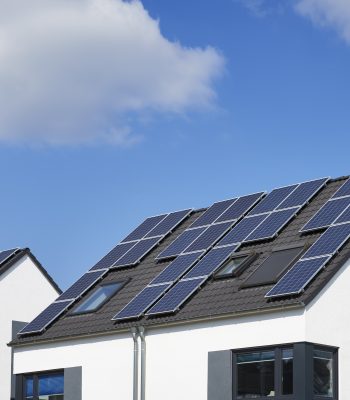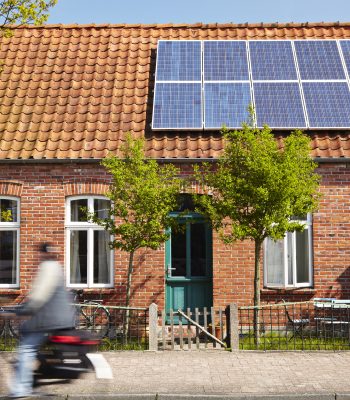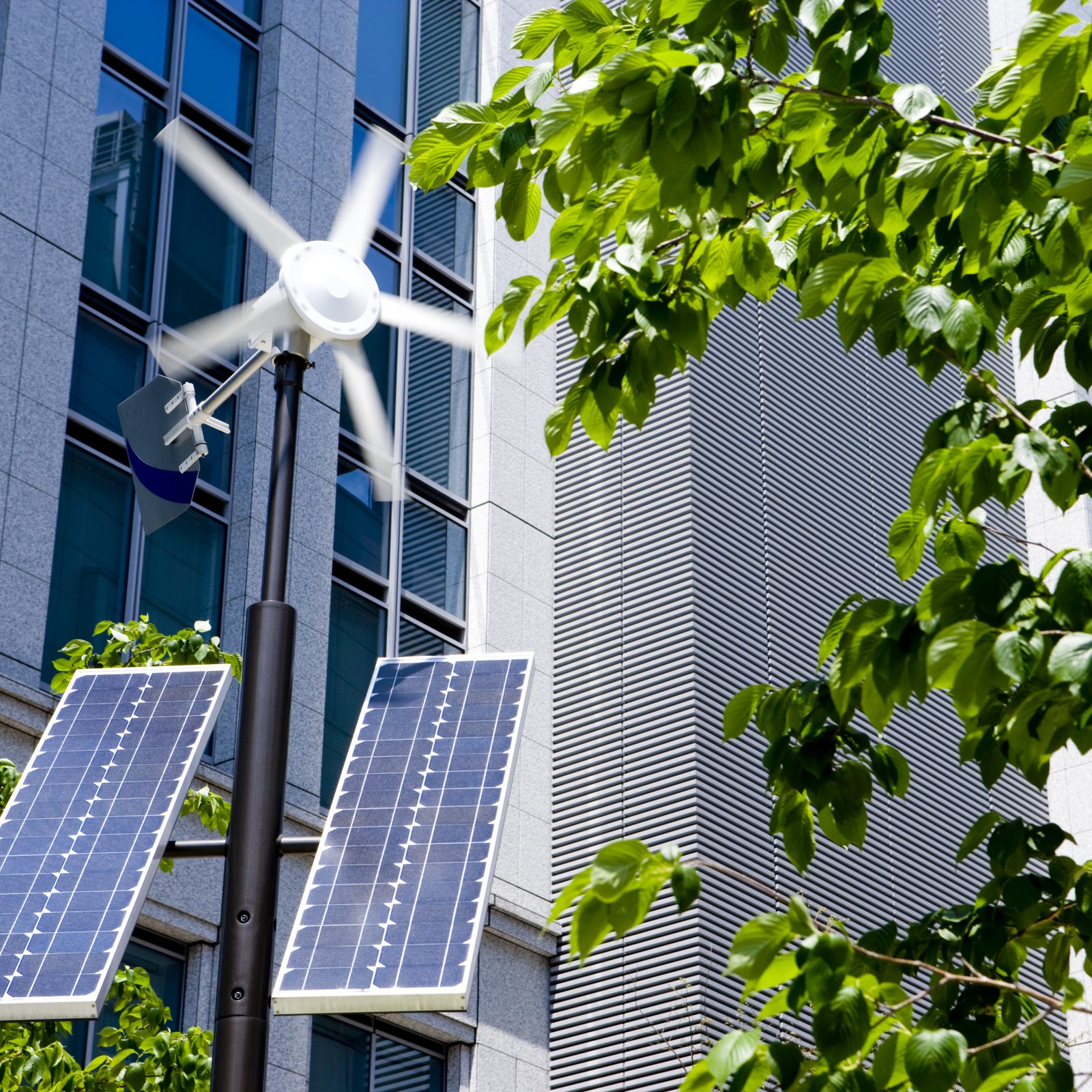Description
Public and private actors can help increase the local production of renewable energy and thus help reduce the carbon footprint of a city. The public sector can lead the way by seeking to install and apply renewable energy solutions wherever economically justified. This can include (i) the introduction of solar/photovoltaic panels for existing and new public buildings or other built structures, (ii) the use of solar panels to fuel public installations such as street lights or ticketing machines, and (iii) active use of biomass or biogas solutions for energy purposes. For example, this can include gas capture from solid waste or wastewater facilities. The benefits of such installations are not only their reduction of energy consumption and the related carbon emissions and energy expenditure, but also that they raise awareness and underpin other initiatives aimed at encouraging private actors to engage in renewable energy generation. Another benefit of renewable energy solutions, such as clean cooking and street lighting, is that they often improve women’s health and safety
Another possible policy instrument to encourage private actors to install renewable energy solutions is the city’s control over planning permits for new buildings and for large building alterations. For example, a city can insist on specific renewable energy components being included as a condition of obtaining building works permits. Alternatively, the city can, as a minimum, require that renewable energy alternatives are analysed when project proposals are being developed. Another measure could be to include solar panel mandates for certain parts of the building stock. For example, Seoul has introduced solar mandates for new multiple-unit dwellings and commercial buildings to accelerate the deployment of solar panels.[1]
While solar panels can be introduced for self-consumption purposes, this can be further incentivised if it is combined with smart meters or net metering mechanisms. This approach could include further incentives through favourable feed-in tariffs for the energy sold back to the grid by private households or private companies.
Setting up a municipal energy agency has also proven to be a cost-effective way to promote renewable energy in a city. For example, the city of Barcelona has set up the Barcelona Energy Agency to meet its environmental and energy commitments. The agency currently supplies 20,000 users in public and private buildings with renewable energy.[2]

Resource implications and key requirements
Even though the costs of solar technology have been falling rapidly, financing often remains the biggest challenge to implementing a municipal solar plan. Cities have a range of business model options to overcome this barrier, distinguished by who owns the asset: the city itself or a third-party investor.[3] Cities must weigh up these financing and ownership options, taking into account upfront capital costs and expected payback over the lifetime of the installation. National and local regulations, including on whether third-party ownership is permissible at all, will determine the type of possible financing structures. Similarly, there are significant investment costs linked to the installation and upgrading of meters (see policy option E5).

Potential private-sector participation
The private sector is the primary provider of capital for renewable energy solutions worldwide. To leverage private investment, city governments can adopt a third-party ownership model, by which the city government enters into a contractual agreement with a private developer, who provides the upfront investment for the solar power system. This model can allow the city to install solar power with no upfront capital costs and no impact on its balance sheet. Third-party ownership models are better suited to larger-scale projects because the legal and due diligence costs for investors can be high. The two core models of third-party ownership are power purchase agreements or lease arrangements.
Private companies can also initiate small and medium-sized renewables projects or participate in the clean technologies value chain, from equipment manufacturing to retail and maintenance. To increase private-sector participation, local authorities can deploy models such as PPPs, concessions and service contracts, as well as provide SMEs with technical assistance or business advisory services.
It is worth noting that women are under-represented in the renewable energy sector. According to a survey of 90 private renewable energy companies from more than 40 countries, women only account for 32 per cent of full-time employment in the industry. Lack of STEM background, discouraging workplace policies, and lack of training opportunities are among the barriers that hinder women from entry, retention or advancement in the sector.[4] Therefore, cities should integrate inclusive procurement considerations into the partnership with private contractors to mainstream gender perspectives through gender-sensitive policies and practices like equal opportunities, gender audits and gender targets.

Implementation obstacles and possible solutions
As outlined above, significant investment costs are often the biggest barrier to cities embracing solar solutions. To overcome these barriers, cities can either pursue a direct or a third-party ownership strategy with regard to solar assets. In the direct ownership model, the city purchases the solar system using its own funds, grants from the national or regional government, or borrowing money using municipal bonds. The benefits of such a model are that direct ownership allows the city to have full control over the benefits of solar. However, the city is dependent on the upfront capital being available, or the financial, legal and political ability to issue bonds. In most cases, the city also shoulders the full risk of constructing and operating the solar system. Direct ownership can be a city’s only option if the regulatory framework necessary to enable more elaborate business models is not in place.
In the third-party ownership model, the city government enters into a contractual agreement with a private developer, who provides the upfront investment for the solar system. These models can allow the city to install solar power with no upfront capital costs and no impact on their balance sheets. Third-party ownership models are better suited to larger-scale projects because the legal and due diligence costs for investors can be high. The two core models of third-party ownership are power purchase agreements or lease arrangements.[5]
Upgrading electricity meters also require significant investment costs as well as widespread cooperation from private property owners, who may be unwilling to cooperate. Therefore, these policy measures may be most successful when combined with subsidy schemes and favourable price signals such as subsidised feed-in tariffs for electricity, thus channelling electricity back to the grid from private businesses and private property owners. Predictability is very important in order to encourage private actors to invest in renewable energy solutions. Hence, city authorities should consider ways to increase predictability through risk-sharing arrangements or guarantee mechanisms. The city should also clearly define its commitment to the renewable energy agenda as part of its stakeholder consultation process and public awareness campaigns.
Aside from addressing the financial barriers, city authorities also need to ensure that renewable energy provision is socially inclusive. Women, who are often the primary users of energy in households, may have to endure disproportionate time and physical and health burdens if they cannot access affordable, safe and sustainable energy. Also, some renewable energy services may be too expensive for low-income households. To solve the accessibility problem, cities can initiate user training on renewable energy system operation and maintenance or promote targeted awareness campaigns to encourage women to use clean cooking or smart meters. As for improving affordability, authorities can apply financial and policy instruments such as baseline tariffs, conditional cash transfers or targeted subsidies to help consumers with financial challenges benefit from renewable energy.

References
[1] Seoul Metropolitan Government (2017), “One in three houses in Seoul to have photovoltaic facility”, November 2017.
[2] Barcelona Energia (2019), “Nuestra Actividad”, Barcelona Energia web page.
[3][5] C40 Cities (2019), “How to install solar panels on city-owned property and lead by example”.
[4] IRENA (2019), “Renewable Energy: A Gender Perspective”.














